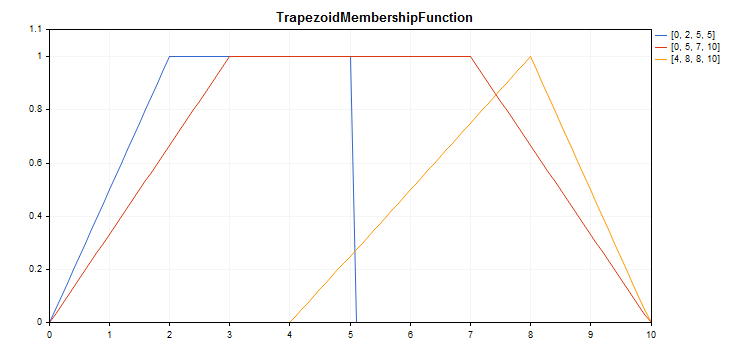CTrapezoidMembershipFunction
Class for implementing a trapezoidal membership function with the X1, X2, X3 and X4 parameters.
Description
The function is formed using piecewise linear approximation. This is a generalization of the triangular function allowing you to assign a fuzzy set core as an interval. Such a membership function makes it possible to conveniently interpret optimistic/pessimistic assessments.
The function is used to set asymmetric membership functions of the variables with their most critical values defined within a certain interval.

A sample code for plotting a chart is displayed below.
Declaration
class CTrapezoidMembershipFuncion : public IMembershipFunction |
Title
#include <Math\Fuzzy\membershipfunction.mqh> |
Inheritance hierarchyCTrapezoidMembershipFunction |
Class methods
Class method |
Description |
|---|---|
Gets and sets the value of the first point on the X axis. |
|
Gets and sets the value of the second point on the X axis. |
|
Gets and sets the value of the third point on the X axis. |
|
Gets and sets the value of the fourth point on the X axis. |
|
Calculates the value of the membership function by a specified argument. |
//+------------------------------------------------------------------+
|